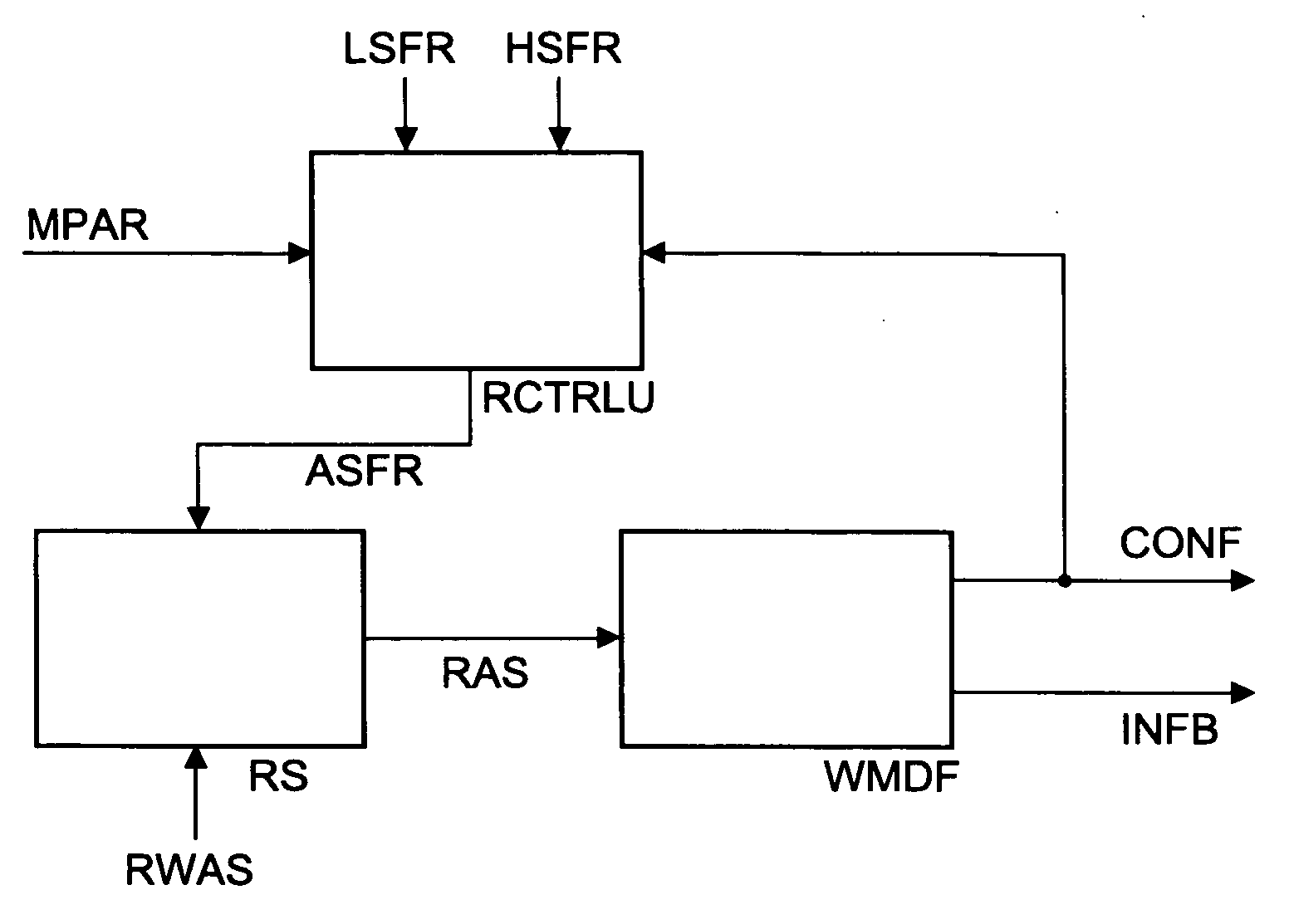Method and apparatus for determining and using the sampling frequency for decoding watermark information embedded in a received signal sampled with an original sampling frequency at encoder side
a technology of sampling frequency and watermark information, which is applied in the direction of recording signal processing, television systems, instruments, etc., can solve the problems of difficult decoding of watermark information in received audio or video signals
- Summary
- Abstract
- Description
- Claims
- Application Information
AI Technical Summary
Benefits of technology
Problems solved by technology
Method used
Image
Examples
Embodiment Construction
[0025]Most watermarking systems use a correlation based detection, which means that at encoder side several pseudo-random sequences representing a bit or word value are generated, or selected from a memory, and one or more of them are embedded inside the content or signal (e.g. an audio or video signal), depending on the message (e.g. watermark bits) to be embedded. The same pseudo-random sequences are generated, or selected from a memory, at decoder side. To decode the embedded message, it is necessary to determine which pseudo-random sequences were embedded inside the received content or signal. This is performed e.g. by correlating the known pseudo-random sequences with the possibly pre-processed content or signal. The decoder or receiver detector thereafter decides, depending e.g. on the size of the correlation result amplitude values, whether or not a given sequence was embedded.
[0026]In FIG. 1, for detecting the correct sampling frequency of the incoming watermarked signal RWA...
PUM
 Login to View More
Login to View More Abstract
Description
Claims
Application Information
 Login to View More
Login to View More - R&D
- Intellectual Property
- Life Sciences
- Materials
- Tech Scout
- Unparalleled Data Quality
- Higher Quality Content
- 60% Fewer Hallucinations
Browse by: Latest US Patents, China's latest patents, Technical Efficacy Thesaurus, Application Domain, Technology Topic, Popular Technical Reports.
© 2025 PatSnap. All rights reserved.Legal|Privacy policy|Modern Slavery Act Transparency Statement|Sitemap|About US| Contact US: help@patsnap.com


